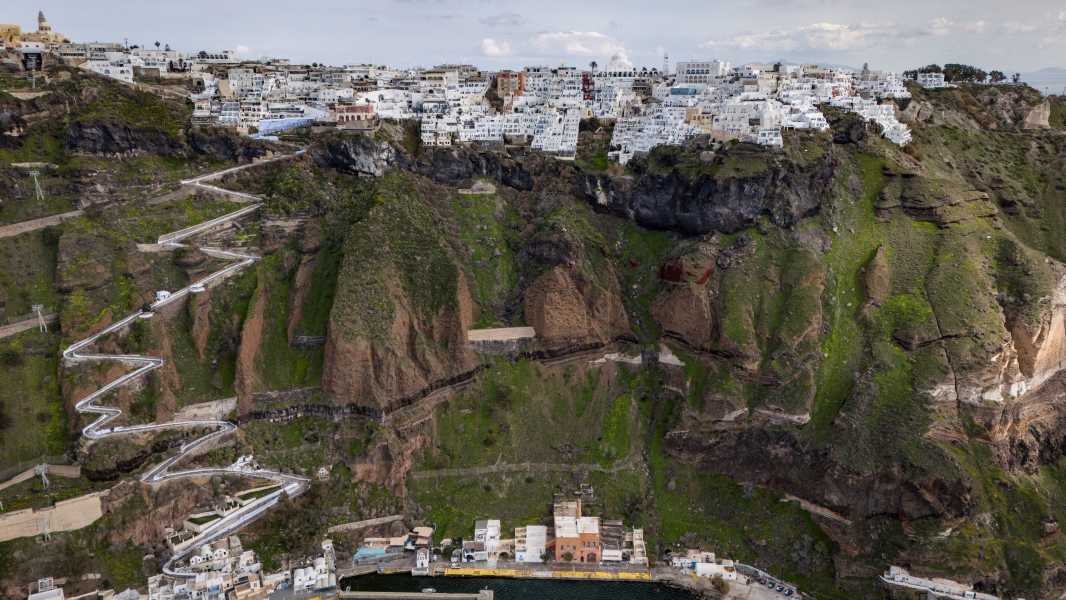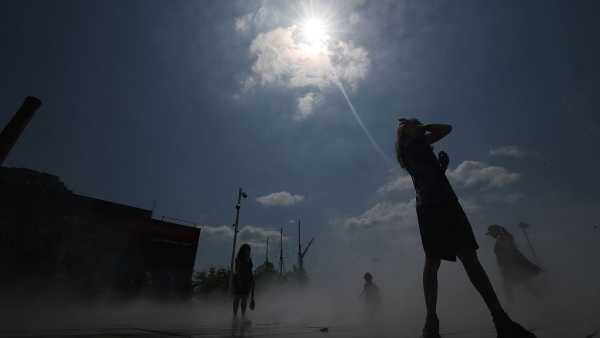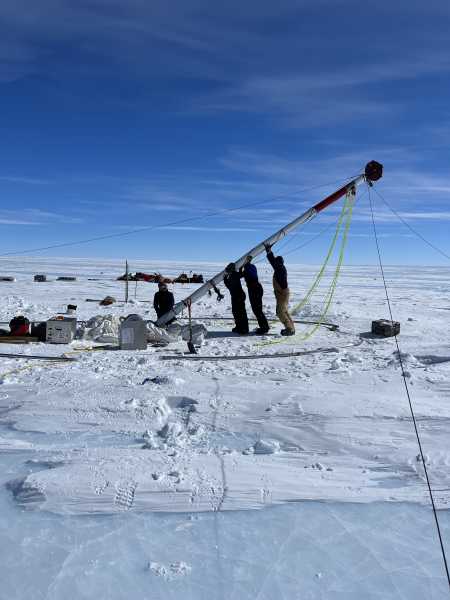
The aftermath of a series of earthquakes affecting the island of Santorini is intensifying. (Photo: Aris Messinis/AFP via Getty Images)
Greek authorities have suspended schools and deployed emergency services as a series of earthquakes intensify near the volcanic island of Santorini. Scientists are not predicting an eruption on Santorini or other volcanoes in the region, but have warned of the possibility of more powerful quakes.
Residents of Santorini began feeling the tremors last week when underwater earthquakes began to occur in the Aegean Sea. These small earthquakes, mostly with a magnitude of 3.5 or lower, continued to increase on Monday (February 3).
The strongest earthquake so far was a magnitude 5 quake that struck 21 miles (34 kilometers) northeast of Santorini at 2:27 p.m. local time (7:27 a.m. ET), according to the University of Athens earthquake tracking website.
In response to the earthquakes, Greek authorities ordered precautions on Santorini and neighboring islands, which are popular tourist destinations, according to the Associated Press.
Santorini sits on the exposed portion of a largely underwater volcano known as the Santorini Caldera. However, researchers believe that earthquakes there are caused by the movement of tectonic plates rather than volcanic activity.
David Pyle, a professor of earth sciences at Oxford University who has studied volcanoes in the Santorini caldera, told Live Science that the quakes in the region were likely caused by a series of faults — or zones where two blocks of rock move relative to each other. Still, he noted that the quakes were “unusual.”
“The challenge with this event is that we're seeing earthquake after earthquake,” Pyle said. “It's all happening underwater, so it's very difficult to predict what's going to happen next.”
The Aegean Sea sits on a small crustal plate that is being stretched as the neighboring African Plate slides beneath the Eurasian Plate. Pyle noted that the stretching in the Aegean's crust creates stress that causes faults to move and trigger earthquakes.
This is not the first time Santorini has experienced a series of small, concentrated earthquakes, known as a seismic swarm. Magma movement beneath Santorini caused a swarm around the island in 2011 and 2012, but that event was less intense than the current swarm, which is occurring northeast of the island.
“The area affected is somewhat larger [than in 2011 and 2012], the frequency of recorded earthquakes has also increased, and the focus of events is outside the Santorini caldera,” Pyle said.
volcano columbo
Most of the quakes occurred between another underwater volcano, Kolumbo, which lies about 4.4 miles (7 kilometers) northeast of Santorini, and the small island of Anydros. Although the quakes this time appear to be caused by tectonic processes, Pyle emphasized that researchers are not sure whether there is a direct connection between tectonic activity and potential volcanic activity at Kolumbo.
“We actually know little about the deep systems that supply magma to volcanoes,” Pyle said.
Mount Columbo last erupted in 1650, causing a catastrophic tsunami that devastated the region’s islands. Santorini was formed by an earlier Minoan eruption in 1600 B.C., which was one of the largest volcanic eruptions in recorded history, according to the Lamont-Doherty Earth Observatory at Columbia University in New York.
TOPICS plate tectonics
Sourse: www.livescience.com





